
There is always a bit of bias towards birds in our relationship with wildlife. They are visible, active, attractive, tuneful and not dangerous. What's not to like! So when wondering how I could improve the garden for the local animals one of the first things that came to mind was nest-boxes for birds.
Thinking about this coincided with wondering what I could use from the garden to weave with. I experimented a bit with reeds without a clear view of what I was trying to make then had the idea of weaving nest-boxes/baskets. I wanted something that would last at least a few years. And given that it might be prone to getting raided by anything that could chew through it (eg squirrels) or pull it apart (eg crows) it should be big enough to attract birds that can defend themselves. A little basket for Magpie Robins would be lovely but more vulnerable than one made of wood. But a basket with a family of owls defending it might work. I was not entirely convinced about this logic but I gave it a go.
Starting a coiled grass basket-box
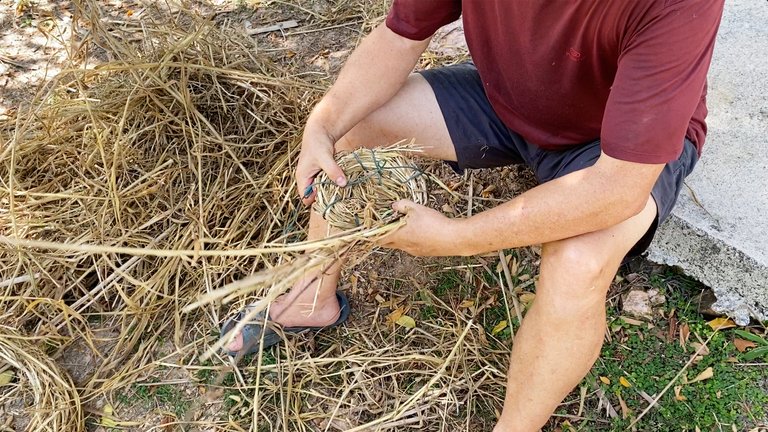
The first one I made was a coil basket of our tallest, toughest dried grass twisted into a continuous inch-thick bundle. The overlapping coils were held together with hemp string. It was about 60 centimetres high with roof and a lip over the entrance. As a replacement for the tree holes that are rare in our area due to the lack of big, old trees, I hung it as high up in a tree as I could climb. I managed to give it a sheltered position that still had a nice flight-line in and a view of the surrounding countryside.
Finished grass basket-box about 4 metres up

I saw this as a test of the idea and the durability of the woven construction. The rigors of the rainy season in Thailand would be the challenge. I was dreading the guilt if it failed whilst occupied so used strong rope to hold it in place that should be able to resist fraying as the wind blows the tree around.
I also worked on a different style using the long mid-ribs of banana leaves, which I had noticed become very tough when dry. They are challenging to weave as they taper a lot from one end to the other. Striping the flat leaf away with a sharp blade is a peculiarly satisfying job so I quickly produced a big pile of these midribs ready to use. Some of them were over two metres long.
Preparing banana leaf midribs for weaving

Making three of these basket-nest-boxes from mid-ribs was challenging but fun although one improvement would be to reduce the gapiness of the weave. This style has great potential as it does not need anything other than the banana leaves of which we have no shortage. No glue, no string, no wire. The material is even strong enough to do the rope’s job of holding it onto the tree. Also, termites should not be a problem high up a tree. The other aspect I like is the range of possibilities in shape and size. No need to be constrained by the thought of “basket” or “box”. Something that merges into the shape of the tree-trunk or hangs lengthwise along a branch perhaps.
Weaving with banana leaf midribs

Finished banana leaf midrib basket-boxes
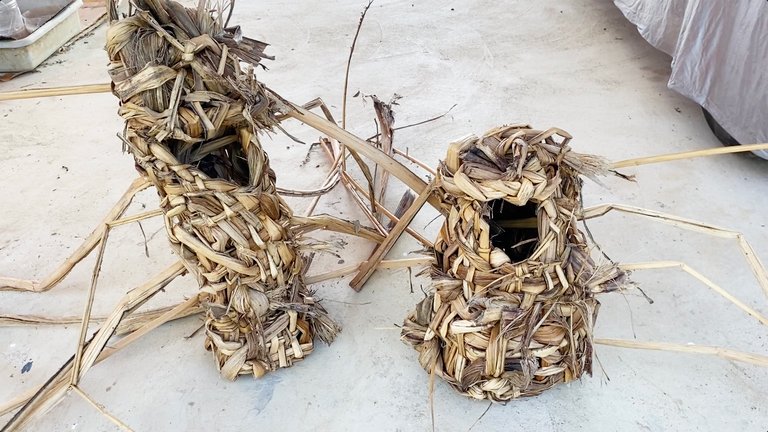
Putting it 5 metres up a tree


Within a week of the first banana-leaf-midrib nest-baskets going up the myna birds were very interested, constantly hanging around and several times going inside. However, shortly afterwards they were chased away by a pair of Indochinese rollers who quickly set up home inside. I was extremely pleased. Lovely birds and they had chosen the one right next to our house so it was easy to watch them.
Indochinese rollers using a banana leaf midrib basket-box
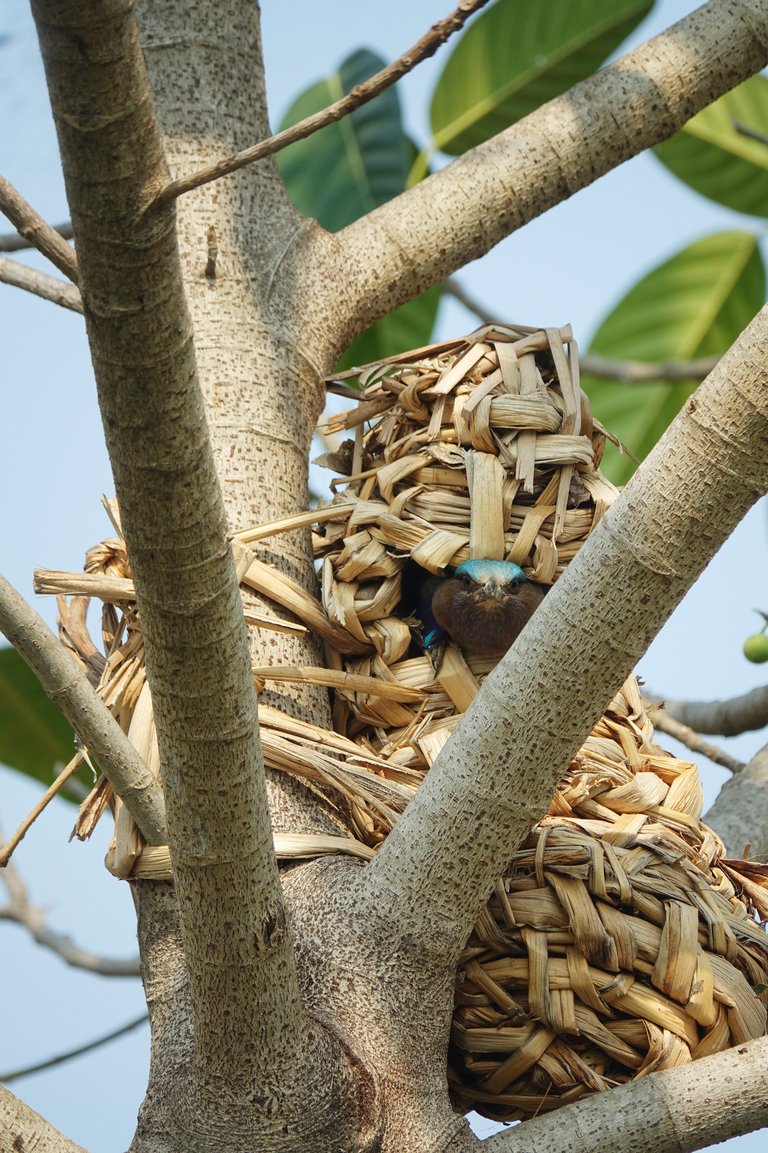

Over the following weeks I kept track of them and eventually started hearing the begging calls of chicks inside. Unfortunately, an overseas trip meant that I didn't get to see them fledge but when I got back the nest-basket was still in place and they had gone so I presume everything had worked out well.
With the grass basket, all seemed quiet and I never saw any birds showing much interest. But then, one evening, something darted away from it when I walked passed the tree and I realised that in the early morning I often saw striped ground-squirrels coming down from this tree. I climbed up and left my trailcam tied to a branch.
The results showed a lovely little wildlife insight. As their name suggests these squirrels spend most of their time on the ground but close to dusk the mother climbed up and spent a few minutes carefully checking that all was safe around the nest-basket. She then left making a gentle call and a few minutes later reappeared with her two very active and mobile kits in tow. The kits had been hiding somewhere nearby after spending the day learning how to be a squirrel. After bouncing around the branches for a while in the twilight they all went inside the basket for the night and I am fairly sure that this was where they had been born.
Mother checking it's safe

Mother and grown-up kits ready for bed

Breeding birds AND breeding squirrels! Success!
However, in the following months the nest-baskets' did begin to disintegrate with the thrashing storms and regular soaking/drying that the rainy season brought with it. I doubted they would last through another breeding season so I took them down.
I am now wondering what to do. Re-making the baskets every year is more work than I really want. I probably should forget the idea of using garden materials and get hold of some wood to make more durable nest-boxes but, call me stubborn, I am currently pondering the possibilities of another style using twigs and sticks...
Start of another idea...
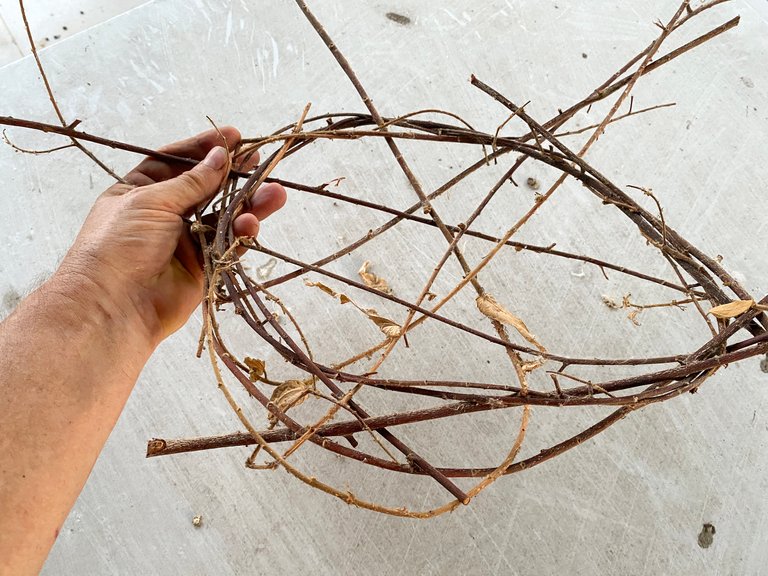


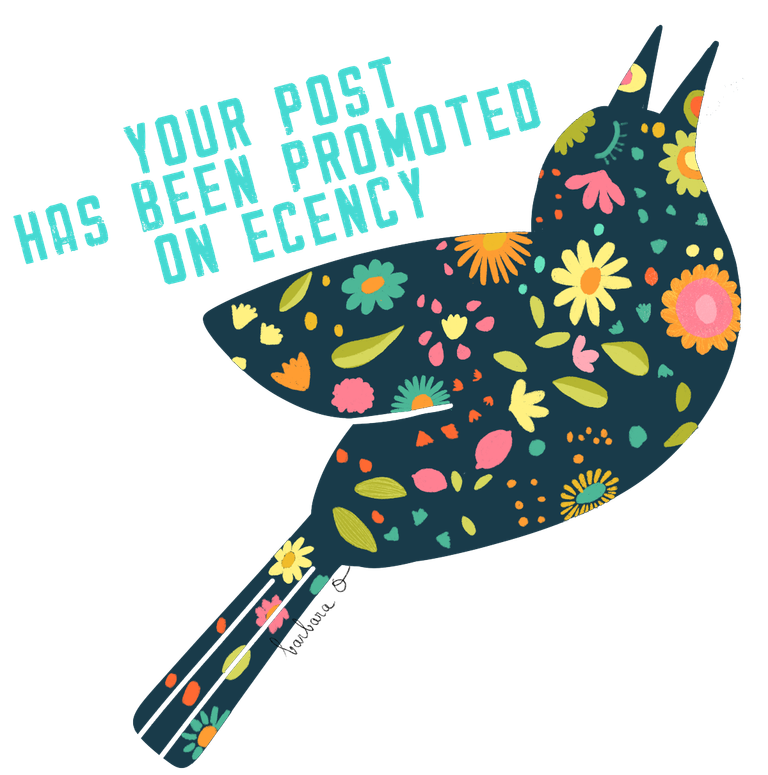 during the next 3 days
during the next 3 days 